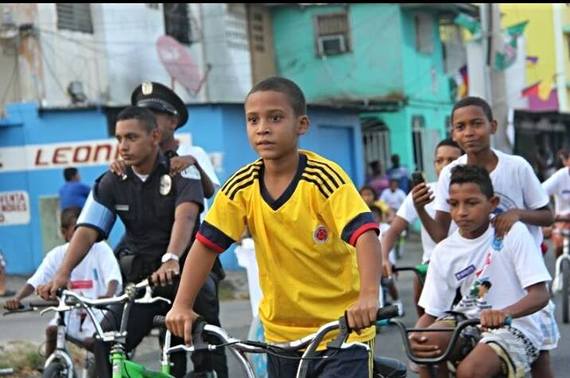The New York Police Department's recent social media stunt was nothing less than a public relations disaster. In an effort to boost community engagement and spread a positive image of the police department, the NYPD communications team designed a hashtag, #MyNYPD. "Do you have a photo w/ a member of the NYPD? Tweet us & tag it #myNYPD. It may be featured on our Facebook," tweeted the NYPDnews account.
The hashtag spread like wildfire, going viral in a matter of hours and becoming one of the top trending hashtags on Twitter that day. The only problem: the Twitter users responding to the NYPD's invitation were more often than not uploading photos of police officers in compromising positions, manhandling civilians or getting perhaps a bit too involved in this year's West Indian Parade. Before they knew, the twittersphere was using the NYPD's own hashtag against them as the tag emphasized the exact negative image that the department was trying to escape from in the first place.
The hashtag even spread to other cities, with #MyLAPD, #MyOPD and #MyAPD hashtags soon following.
So where did the NYPD go wrong? What could they do differently next time? Unfortunately, answers to such questions are far from clear. Though some online marketing gurus would like to turn 'predictive analytics' -- speculation into what will go viral and what won't -- into a science, videos and hashtags that turn into trending topics remain incredibly difficult to predict. As Kartik Hosanagar quipped in a recent Wired column, "you can't make something go viral but you can help move it along" (by organically encouraging "early social cues" according to the University of Pennsylvania professor).
If one thing is certain, it is that Internet users will find a way to make any social network trend their own. Indeed, this is what fuels the 'virality' of such trends, from the Harlem Shake to #necknominations. In the golden age of traditional public relations, the top brass could exert a good deal of control over their companies' or organizations' external communications. The increasingly participative nature of online communication, however, has succeeded in wresting this control from institutions' grip.
Words and actions
Whether the medium is Twitter or traditional press releases, community engagement should always be a bottom-up phenomenon. A hashtag will never repair the image citizens have of a police department, only actions on the ground will (organizing community events, public forums, etc.). What social networks can do in a successful way is to promote the existing image of a police department.
The best example comes from the small country of Panama, where the national police force led by Chief Julio Molto has been recently applauded on the international level for its novel approach to law enforcement. Panama is one of too many Latin American countries that has fallen victim to America's dangerous drug habits. While many of these countries, such as Colombia and Mexico, have responded tackled the issue by increasingly militarizing their police forces, a move that often alienated local communities, Panama has chosen to focus on prevention.
The significance of this move cannot be understated. While much of Latin America's drug-related violence is caused by U.S. demand for drugs, the U.S.-sponsored 'solution' is generally for the governments of these "transit countries" to give up their sovereignty and allow the DEA free reign within their borders -- a lose-lose situation.
The key to Panama's innovative policing strategy is the Unidad Preventiva Comunitaria, a task force charged with "maintaining a direct and ongoing relationship with the community" in an effort to ultimately reduce crime rates. Their lively Facebook page is filled with pictures of these initiatives, as well as information about the police force's various campaigns. The idea is that the most effective way to decrease crime rates is not to militarize the country nor is it to incarcerate increasing numbers of (mostly young male) Panamanians. Instead, authorities should try to offer society's youngest and most vulnerable members credible alternatives to the drug market, whether this be job training or sports activities.
While it may be too soon to calculate the true effect of Molto's prevention-based policing campaign, it seems that the strategy is already paying off. According to OSAC's 2013 Crime and Safety Report, Panama's murder rate declined to 18.0 (per 100,000 inhabitants) in 2012, compared to a homicide rate of 90.4 for Honduras or 21.5 for Mexico. There have been reports that lesser crimes, such as thefts, have also decreased in 2013.
Law enforcement is an interesting case study for using social networks, as the police are arguably an organ of the government that will never enjoy universal praise. However, the example of Panama shows how, with a bottom-up approach and actions to match the words (or hashtags) posted on social networks, the image and effectiveness of a police force can be steadily transformed.

